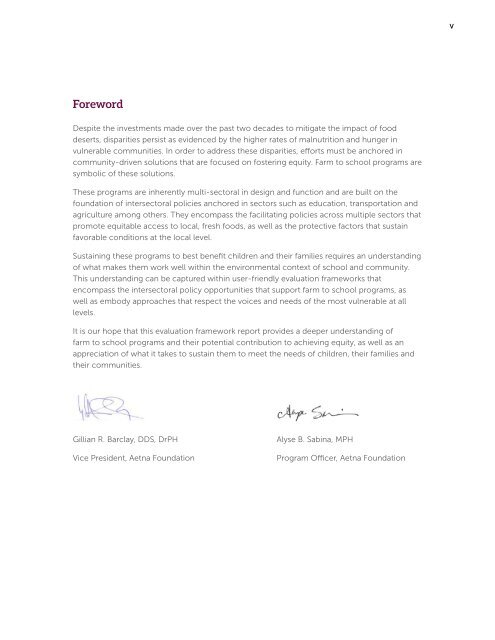Framework-08-25-14_web
Framework-08-25-14_web
Framework-08-25-14_web
Create successful ePaper yourself
Turn your PDF publications into a flip-book with our unique Google optimized e-Paper software.
VForewordDespite the investments made over the past two decades to mitigate the impact of fooddeserts, disparities persist as evidenced by the higher rates of malnutrition and hunger invulnerable communities. In order to address these disparities, efforts must be anchored incommunity-driven solutions that are focused on fostering equity. Farm to school programs aresymbolic of these solutions.These programs are inherently multi-sectoral in design and function and are built on thefoundation of intersectoral policies anchored in sectors such as education, transportation andagriculture among others. They encompass the facilitating policies across multiple sectors thatpromote equitable access to local, fresh foods, as well as the protective factors that sustainfavorable conditions at the local level.Sustaining these programs to best benefit children and their families requires an understandingof what makes them work well within the environmental context of school and community.This understanding can be captured within user-friendly evaluation frameworks thatencompass the intersectoral policy opportunities that support farm to school programs, aswell as embody approaches that respect the voices and needs of the most vulnerable at alllevels.It is our hope that this evaluation framework report provides a deeper understanding offarm to school programs and their potential contribution to achieving equity, as well as anappreciation of what it takes to sustain them to meet the needs of children, their families andtheir communities.Gillian R. Barclay, DDS, DrPHVice President, Aetna FoundationAlyse B. Sabina, MPHProgram Officer, Aetna Foundation


